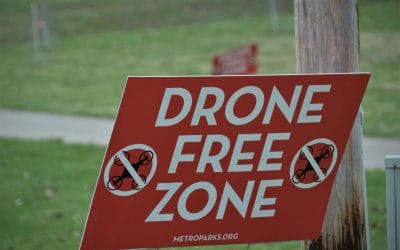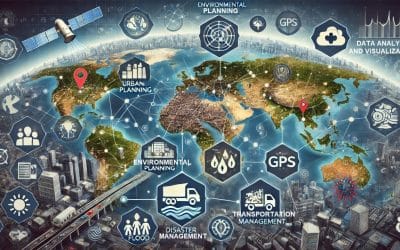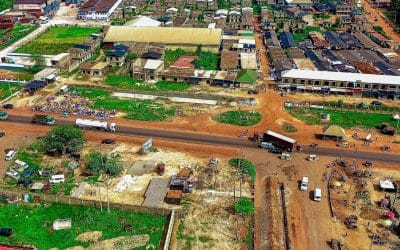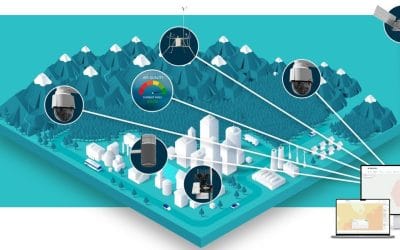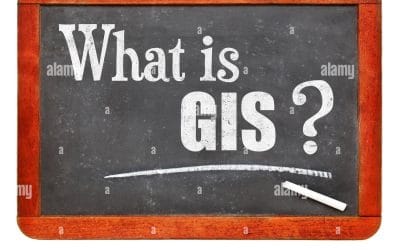Are Geospatial Experts Becoming Obsolete?
What the Future Really Holds for Spatial Professionals
In recent years, artificial intelligence (AI) has transformed how we explore and understand our world. Tasks that once took days or weeks—like classifying satellite imagery, updating maps, or analyzing spatial trends—can now be performed almost instantly with the help of AI-powered tools. This revolution in spatial technology raises an important and often unsettling question: Will we still need human geographers, GIS and remote sensing specialists, and surveyors in the years and decades to come?
At first glance, the answer might seem obvious. After all, AI can now detect objects, monitor land cover changes, and generate maps far faster than any human. But when we look deeper, it becomes clear that while AI will continue to reshape geospatial work, it won’t replace the critical thinking, local knowledge, and human judgment that experts bring to the table.
What’s Changing: The AI Revolution in Spatial Work
AI and automation have already transformed the geospatial field in remarkable ways. Satellite images can be processed almost in real time, with algorithms detecting deforestation, urban sprawl, or flooding as it happens. Autonomous drones collect high-resolution data that can be instantly analyzed, and cloud-based GIS platforms make it easy to visualize and share massive datasets across the globe.
These tools have shifted the focus of geospatial professionals. Instead of spending hours digitizing features by hand or updating standard maps, experts now use AI to handle those repetitive tasks, freeing up time to explore deeper questions and more complex analyses.
The Parts AI Can Replace
It’s undeniable that AI is changing the nature of certain jobs in the field. Many routine and repetitive tasks—such as digitizing roads, updating feature layers, running basic spatial queries, or performing standard survey calculations—can now be automated with high accuracy. AI-driven classification models can identify crops, forests, and buildings without manual interpretation, and object detection tools can track vehicles or monitor infrastructure conditions almost continuously.
While this might sound alarming, it’s worth remembering that these tasks, while important, are often just the foundation of spatial work—not the heart of it.
Why Humans Still Matter (A Lot)
AI excels at recognizing patterns and handling large volumes of data quickly, but it still lacks what makes human geographers and surveyors truly valuable: understanding. Humans interpret why those patterns matter, provide local context, and consider cultural, environmental, and ethical implications that AI can’t.
Fieldwork, too, remains a uniquely human strength. No AI can truly ground truth what’s on the landscape without someone visiting, observing, and making sense of what they see. And beyond analysis, humans are the ones who communicate insights to communities, policymakers, and stakeholders—turning data into stories and strategies that inspire real-world action.
How Roles Are Evolving, Opportunities & Challenges Ahead
Rather than making geospatial professionals obsolete, AI is shifting what their daily work looks like. Instead of spending time on manual digitizing or routine mapping, experts are moving toward supervising AI models, refining results, and designing new applications of AI in public health, climate adaptation, urban planning, and more.
Many are learning to code, work with big data, or build custom AI models designed for local needs. Others are focusing more on communication, policy guidance, and interdisciplinary projects that require a mix of technical skills and human insight. In this way, AI isn’t taking jobs away—it’s transforming them.
Looking forward, spatial AI opens exciting opportunities. New careers in spatial data science, real-time analytics, and AI model development are emerging. Workflows become faster, freeing experts to focus on strategic planning and creative problem-solving. At the same time, there are challenges. Professionals will need to keep learning new tools and approaches. There’s also a risk of over-reliance on automated outputs without critical review, and a need to ensure AI tools are used ethically and inclusively—so they benefit everyone, not just those with the best technology.
The Bottom Line
Will geographers, GIS and remote sensing experts, and surveyors still be needed? Absolutely—but the nature of their roles will evolve. The coming years aren’t about humans versus machines, but about humans and machines working together to ask better questions, find deeper insights, and create more sustainable, fair, and resilient communities.
Rather than worrying whether AI will replace us, the real opportunity is to ask: How can we best partner with AI to do even more meaningful work?





























































































